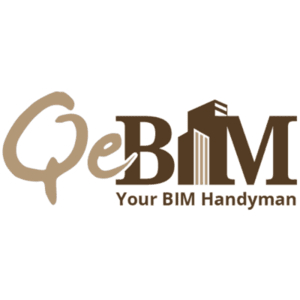Building Information Modelling (BIM) Objects: An In-depth Guide to Creation and Deployment
_Objects_An_In-depth_Guide_to_Creation_and_Deployment1.jpg)
Introduction
The construction sector uses cutting-edge technology known as Building Information Modelling (BIM) to enhance project results. In order to replicate a building's performance including visualizing its layout, a computer-generated model of the building, comprising all of its systems and sections, must be created. The BIM process is not complete without BIM objects, which give particular details on every structural component. We are going to look at exactly what BIM objects were along with how to make these during this tutorial.
What are BIM objects?
BIM objects, which might be utilized in a BIM model, are digital replicas of actual building elements. They offer comprehensive information concerning a particular building component, such as its size, composition, functionality, and price. Three sorts of BIM objects are capable of being distinguished: general, manufacturer-specific, or customized. The BIM program contains pre-defined generic objects that aren't tied to any one particular manufacturer. Manufacturers produce objects designed specifically to exhibit their products as well as to hold knowledge regarding it. BIM object generation services produce customized items to satisfy particular project specifications.
Why are BIM objects important?
The construction sector requires BIM objects in order to give precise and comprehensive details on every structural component. This promotes enhanced decision-making during a project's planning and building stages, which enhances its final achievements. Additionally, objects from BIM let project stakeholders collaborate so they can contribute knowledge while making sensible choices.
How to create BIM objects
It takes specialized skills and knowledge to create BIM objects. There are BIM object generation services accessible to build custom objects for certain project needs. Yet, using BIM tools like Revit, it is additionally possible to create BIM objects internally. The procedure for producing BIM objects with Revit is described in one of the following steps.
Step 1: Compile data
Getting data concerning the building element is usually the initial stage in constructing a BIM object. Included in these details ought to be the component's size, composition, functionality, and price.
Step 2: Create a family template
A family template is an established list of requirements or restrictions utilized to build a BIM object. It contains the component's geometry, measurements, or additional details. In order to assure consistency and precision during the construction phase, developing a family template is an essential phase of developing a BIM object.
Step 3: Create the geometry
The graphical representation of the BIM Object might be constructed via the family template. The element's physical characteristics are created utilizing the resources available in Revit.
Step 4: Add parameters
The BIM object's characteristics include features that might be changed to suit specific building requirements. Variables include things like material, dimensions, or price. A BIM model can be modified to match project needs by including variables.
Step 5: Test the item
The BIM object ought to be verified after everything is completely constructed to make ensuring it functions as intended. This entails verifying the veracity of each element's measurements, composition, and additional characteristics.
Step 6: Keep the item
The BIM object might be stored or uploaded to an existing BIM library after being tested. Thus, it renders it possible for it to be distributed among additional project participants and utilized in the context of BIM.
There are quite a few more factors to take into account while building BIM objects in addition to the methods described in the preceding section:
1. LOD (Level of Detail) - Depending upon the needs of the undertaking, multiple levels of information might be established for BIM objects. Depending upon the object's anticipated usage plus the number of details required, an appropriate degree of complexity ought to be chosen.
2. Categorization - BIM objects may be categorized using a recognized classifying scheme, like Omniclass or Uniformat. Organization and knowledge administration may gain from categorizing BIM objects using a standardized methodology.
3. Metadata - In along with the data that has an immediate connection to an object's morphology or attributes, BIM objects can additionally include extra details known as metadata. Manufacturer, model number, and warranty details are just a few examples of the data that might be found in metadata.
4. Quality Control - For a BIM project to be successful, correct and uniform BIM objects must be created. To guarantee that newly created BIM objects adhere to project specifications and standards, quality control procedures ought to be put in place during every stage of the development procedure.
In order to ensure that BIM objects are built according to the most stringent requirements and adhere to project criteria, BIM Object Creation Services might provide knowledge of these extra factors. Additionally, utilizing BIM object generation services may assist project teams concentrate on other components of the endeavor by saving resources as well as time.
Conclusion
The BIM process is not complete without BIM objects. It enables improved choices and interactions among project participants by providing comprehensive information concerning every building component. There are BIM object generation services accessible to generate unique objects for specific endeavors necessities, yet it is additionally feasible to develop BIM objects internally utilizing BIM software like Revit. Making correct and reliable BIM objects that usage in BIM models might be facilitated by adhering to the instructions offered in this article.












